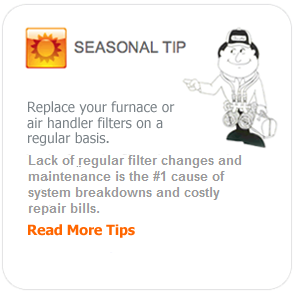Save Money and Make Your Home more Comfortable
Do–It–Yourself
1. Find the air leaks
First, close all your windows, doors and flues and turn off your furnace and water heater. Then turn on all your exhaust fans–this will help pull air from the outside. Now, walk around your home and feel for drafts in the following areas:
-Doors and windows
-Fireplaces
-Corners, baseboards and areas where the wall and ceiling meet
-Pet doors and mail lots
-Window AC units
-Electrical outlets and plates
-Pipes
If you have trouble, try wetting your hand or use a lit incense stick and watch the trail of smoke for indications of drafts.
2. Check your insulation
In the attic you should find both insulation and a vapor barrier underneath it. If your basement is heated, there should be insulation in the walls, around pipes, the water heater and ducts. If your basement is unheated you should also find it installed underneath living areas. Of course, there should be insulation in your walls as well. To check, turn off the electricity in your home, remove an electrical outlet plate and push a stick (a chopstick works really well) into the gap–resistance indicates insulation.
3. Heating and Cooling Equipment
these energy draining systems have come a long way in terms of efficiency, size and noise levels. If your equipment is more than 15 years old, you can most likely save as much money in lower utility costs over a couple years as you spend replacing them with a new, quiet efficient system. Plus, new tax credits and incentives [anchor to Tax Incentives Info below] make replacing older units a logical choice. Regardless of age, all HVAC equipment should be serviced annually by a certified professional to maintain efficiency.
4. Think about your lights
Replacing incandescent bulbs with fluorescents and/or LEDs not only dramatically reduces the amount of energy it takes to light up your home, it also significantly reduces the amount of heat produced and creates less work for your AC system. Avoid halogen lamps which produce a great deal of heat. Install dimmer switches where they can be used and motion sensors on exterior lights.
Professional Audits
1. Find the air leaks
First, close all your windows, doors and flues and turn off your furnace and water heater. Then turn on all your exhaust fans–this will help pull air from the outside. Now, walk around your home and feel for drafts in the following areas:
A professional home energy audit should include the following:
- Use of a calibrated blower door–To the extent that is possible, the technician will seal your home and then using a special fan create negative pressure (don’t worry, nothing will be damaged) which will draw air inside. This makes it easier to detect leaks and reveals areas for improvement typically not noticeable.
- A thermographic inspection–this specialized test will result in a color coded chart of your home indicating warm and cool spots. Using this information, the technician can suggest means of equalizing the temperature throughout your home–these may include installing additional thermostats, heating vents or humidifiers in key areas.
- Inspection of ducts and HVAC equipment–if your ducts have leaks, or your heating and cooling equipment is operating below its peak performance level, the technician will determine the cause and suggest solutions.
© Air Conditioning Contractors of America Association, Inc., www.acca.org. Reprinted with permission.




